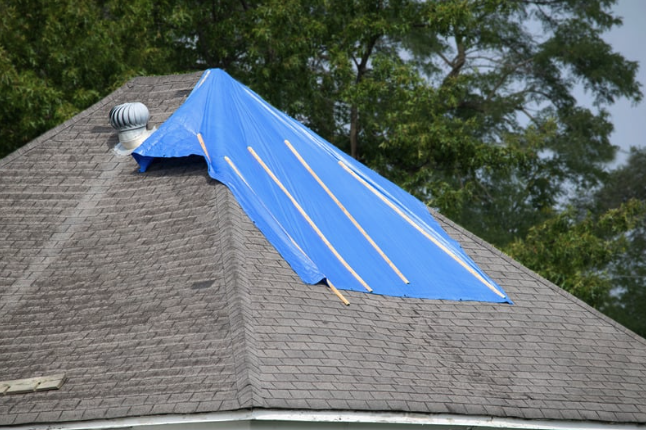Major Roofing Mistakes That Could Cost You Thousands — And How to Avoid Them
Roofing mistakes can turn a necessary home upgrade into a costly nightmare. Replacing a roof is one of the most significant investments you can make in your home. It’s a complex process that requires careful planning, the right materials, and skilled execution. However, several common mistakes can compromise the quality and longevity of your new roof. Whether you’re a homeowner overseeing the project or a contractor aiming for excellence, understanding and avoiding these pitfalls is crucial for ensuring a successful roofing project that stands the test of time.

1. Roofing Mistakes: Ignoring Climate Considerations and Choosing the Wrong Materials
One of the most frequent mistakes in roof replacement is failing to account for the local climate when selecting roofing materials. The environment in which your home is located plays a critical role in determining the best materials for your roof.
- Reflective Materials for Sun-Intense Areas: In regions with intense sunlight, using reflective roofing materials can help reduce heat absorption, lowering energy costs and extending the roof’s lifespan.
- Water-Resistant Materials for Rainy Climates: In areas prone to heavy rainfall or snow, it’s essential to choose materials that are highly resistant to water damage and can withstand moisture without deteriorating.
By aligning your material choice with the local climate, you can enhance the performance and longevity of your roof, ensuring it provides optimal protection.
2. Overlooking Material Quality: The True Cost of Cutting Corners
Choosing low-quality materials in an effort to save money upfront is a short-sighted decision that can lead to long-term problems.
- Durability Over Cost: High-quality roofing materials may come with a higher price tag, but they offer superior durability, require fewer repairs, and can extend the life of your roof by years.
- Consider Long-Term Savings: Investing in quality materials from the start can save you from costly repairs or even premature roof replacement down the line.
Overlooking material quality might seem like a budget-friendly option initially, but it often results in higher costs over the lifespan of the roof.
3. Not Removing Old Shingles: The Risks of Layering
Some contractors may suggest installing new shingles over old ones to save time and money. However, this practice can lead to several issues:
- Hiding Underlying Problems: Overlaying new shingles can conceal existing damage, such as rot or mold, preventing necessary repairs and leading to further deterioration.
- Added Weight: Additional layers add unnecessary weight to your roof structure, which can strain the roofing framework and reduce the new roof’s lifespan.
- Thorough Inspection and Clean Slate: Removing old shingles allows for a comprehensive inspection of the roof deck, ensuring that any damage is addressed before the new shingles are installed.
A clean slate not only ensures better adhesion and alignment of new shingles but also contributes to the overall longevity and performance of your roof.
4. Roofing Mistakes with Nails: Compromising Roof Integrity
The proper use of roofing nails is critical to the stability and durability of your roof. Common mistakes include:
- Wrong Size or Type: Using nails that are too short, too long, or made of the wrong material can lead to insufficient holding power or even damage to the shingles.
- Insufficient Nailing: Not using enough nails can result in loose shingles, which are more vulnerable to wind damage and leaks.
- Incorrect Placement: Nails placed too high, too low, or not driven flush can compromise the shingle’s ability to withstand weather conditions.
Ensuring that roofing nails are correctly sized, placed, and installed is essential for maintaining the integrity of your roof and preventing future issues.
5. Failing to Install Proper Flashing: A Leading Cause of Leaks
Flashing is a critical component of your roofing system, designed to prevent water infiltration at roof joints and around features like chimneys, vents, and skylights.
- New Flashing Over Old: Reusing old flashing or installing it improperly can lead to water leaks, which can cause significant damage to your home’s interior and structure.
- Proper Installation: Always use new flashing during a roof replacement and ensure it is correctly installed and sealed to provide effective protection against water infiltration.
Proper flashing installation is one of the most important steps in preventing leaks and ensuring the long-term durability of your roof.
6. Neglecting Roof Ventilation: Risking Moisture Buildup
Roof ventilation is essential for maintaining a healthy and efficient roof. Inadequate ventilation can lead to several problems:
- Moisture Buildup: Without proper ventilation, moisture can accumulate in your attic, leading to mold growth, wood rot, and a shortened roof lifespan.
- Increased Energy Costs: Poor ventilation can cause your home to retain heat in the summer and lose heat in the winter, resulting in higher energy bills.
- Ventilation Plan: Ensure your roofing plan includes adequate ventilation, such as ridge vents, soffit vents, or gable vents, to allow for proper airflow.
Neglecting roof ventilation can have serious consequences, both for your roof’s durability and your home’s energy efficiency.
7. Focusing Solely on Cost: The Dangers of the Lowest Bid
While it’s important to stay within budget, focusing only on the lowest cost can lead to poor material choices and subpar workmanship.
- Balancing Cost and Quality: Choose a contractor who offers a fair price for high-quality work and materials. The cheapest option may save money initially but could cost more in the long run due to frequent repairs or premature roof failure.
- Value Over Price: Look for a balance between affordability and quality to ensure a durable and reliable roof that provides long-term value.
Prioritizing quality over the lowest cost is key to ensuring a roof that will protect your home effectively for many years.
8. Not Obtaining Necessary Permits: Avoiding Legal Complications
Skipping the permit process is a mistake that can lead to legal issues, fines, and even the need to redo the work.
- Adherence to Local Codes: Roofing projects often require permits to ensure they comply with local building codes and safety standards.
- Contractor Responsibility: Ensure your roofing contractor obtains all the necessary permits and adheres to local regulations, protecting you from potential legal complications.
Obtaining the proper permits is a small step that can prevent significant headaches down the line.
9. Overlooking Maintenance: The Importance of Regular Roof Care
Even the best-installed roofs require regular maintenance to remain in good condition.
- Routine Inspections: Regularly inspect your roof for signs of wear and tear, especially after severe weather. Early detection of issues can prevent them from escalating into major problems.
- Scheduled Maintenance: Establish a maintenance plan that includes regular inspections, cleaning, and minor repairs to extend the life of your roof.
Neglecting maintenance can lead to costly repairs and a shortened roof lifespan, undermining the investment in your roof replacement.
10. Poor Contractor Selection: Ensuring Quality Workmanship
The success of your roof replacement largely depends on the contractor you choose.
- Licensed and Insured Contractors: Ensure that your contractor is licensed, insured, and experienced. This not only protects you legally but also ensures that the work will meet industry standards.
- Clear Communication and Detailed Estimates: Choose a contractor who provides clear communication, detailed estimates, and a written contract outlining the scope of work, materials, timeline, and costs.
- Reputation Matters: Check reviews, ask for references, and consider the contractor’s reputation to ensure you’re working with a reliable professional.
Selecting the right contractor is crucial for ensuring that your roof replacement is completed on time, on budget, and to the highest standards of quality.
Conclusion: Avoiding Common Roof Replacement Mistakes for a Successful Project
Replacing a roof is a significant investment that requires careful planning and attention to detail. By understanding and avoiding these common mistakes—such as ignoring climate considerations, choosing low-quality materials, and neglecting proper ventilation—you can ensure that your roof replacement is successful and long-lasting. Remember, the key to a durable and reliable roof lies in choosing the right materials, working with a skilled contractor, and committing to regular maintenance. By following these guidelines, you can protect your home and your investment for years to come.
Frequently Asked Questions
Why is it important to consider the local climate when choosing roofing materials?
The local climate significantly affects how well certain roofing materials perform. Choosing materials suited to your climate ensures better durability and energy efficiency.
How can I ensure my roofing contractor uses quality materials?
Ask your contractor for detailed information about the materials they plan to use, including brand names and warranties. Choose a contractor with a reputation for quality work and materials.
What are the risks of not removing old shingles before installing a new roof?
Not removing old shingles can hide underlying damage, add unnecessary weight to the roof structure, and reduce the lifespan of the new roof. A full tear-off ensures a thorough inspection and a better foundation for the new roof.
How often should I inspect my roof after replacement?
It’s recommended to inspect your roof at least twice a year, in the spring and fall, and after major storms to catch any potential issues early.
What should I look for when choosing a roofing contractor?
Look for licensed and insured contractors with strong references, positive reviews, and clear communication. Ensure they provide detailed estimates and a written contract.
What happens if my contractor skips obtaining the necessary permits?
Skipping permits can lead to legal issues, fines, and the need to redo the work to comply with local codes. Always ensure that your contractor obtains the necessary permits for your project.
Get Your Roof Repaired by Legacy Roofers
Don’t wait for roof damage to worsen. Contact Legacy Roofers, the most reliable and skilled roof repair contractor in Colorado. Call us today or visit our website to schedule a consultation and see why we are the preferred choice for homeowners across the state.
Contact Us today to learn more about our roof repair services and how we can help protect your home.


